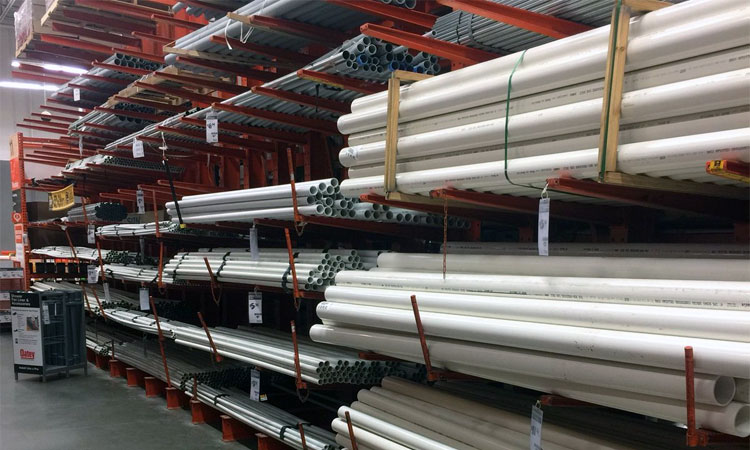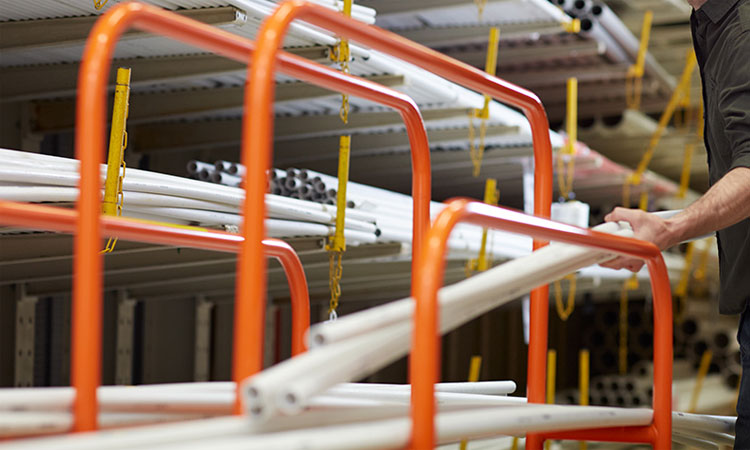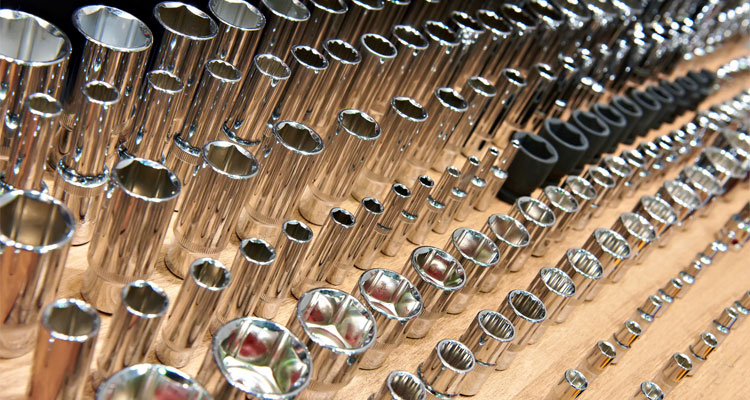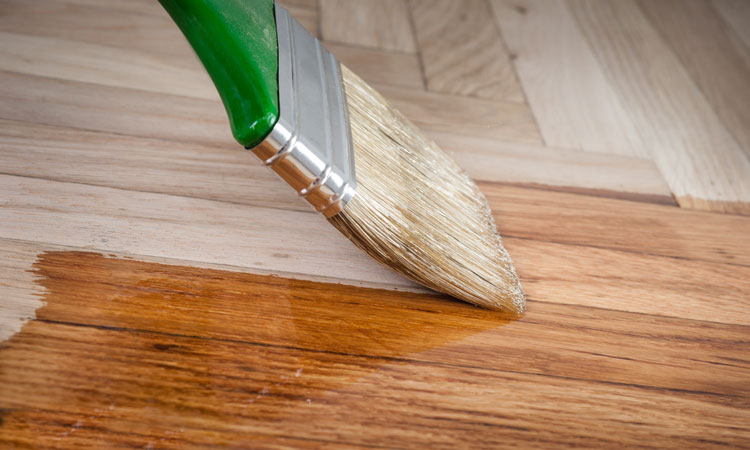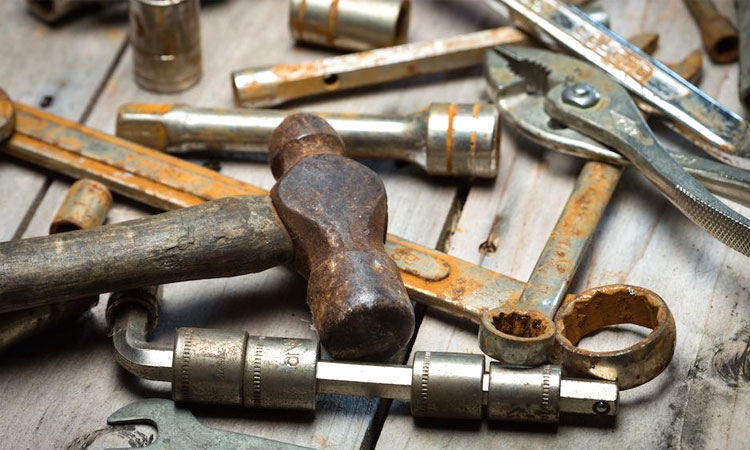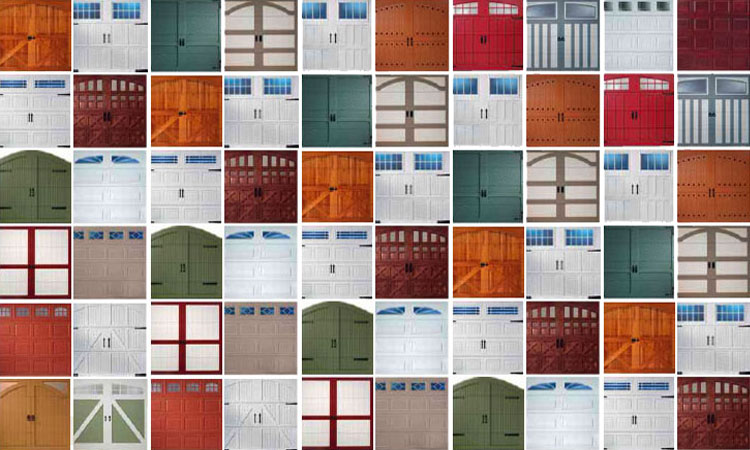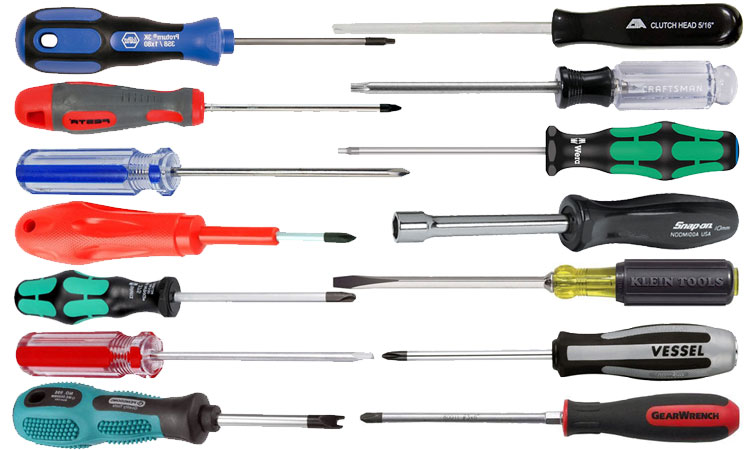PVC Pipe Sizes (w/ Charts)
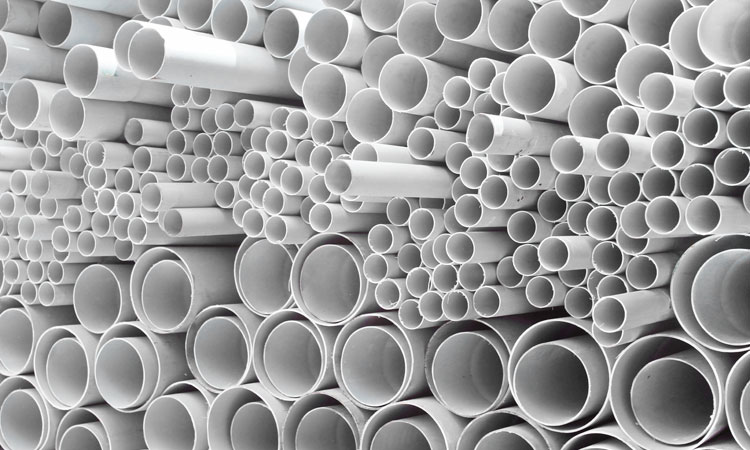
One of the greatest inventions since sliced bread is PVC (polyvinyl chloride). This sturdy material has seen a lot of use in everything from hobbies to construction, and comes in several variations, such as the more heat-tolerant CPVC. But perhaps the most recognizable use of PVC is in pipes.
The following guide will not only help you measure PVC for the best fit and explain the different Schedules, but will also provide a handy sizing chart for reference.
What is PVC?
PVC pipes are made from Type 1, Grade 1 polyvinyl chloride and adhere to a strict definition in ASTM D1784. All PVC pipe ranges in size from 1/4 to 24 inches with a few larger options as high as 36” for special purposes. It withstands temperatures between 33 and 140 degrees, and the pressure rating varies from 120 to 1230 PSI, depending on size, Schedule, and ambient temperature.
What makes PVC so useful is its resistance to most corrosives, allowing it to transport everything from water to chemicals. Both Schedule 40 and Schedule 80 have a tensile strength of 7,500 PSI, adding to their durability. Bell-shaped PVC pipes must meet ASTM D2672 standards, while all Schedule 80 pipes are held to additional guidelines.
But simply knowing how safe and effective PVC pipe is won’t help you actually install it so keep reading.
Related: PVC vs CPVC vs PEX (How They Differ)
How is PVC Pipe Measured?
PVC measurements can be a little confusing. While the pipe measures between 1/4 and 24 inches, the nominal size on PVC under 14 inches will be a little off. This is due to the way the PVC pipe dimensions are measured.
On PVC pipes rated 14 inches or larger, the pipe is measured according to the outside diameter. Thus, a 20” pipe will have a 20” outer diameter.
Meanwhile, pipes under 14 inches are measured by the inside diameter. This is where the confusion happens, because a 10 inch pipe has an outside diameter (O.D.) of 10.750 inches and an average inside diameter (I.D.) of 9.976.
When measuring smaller PVC for fittings, it’s important to take note of the outer diameter, and this measurement can also be useful when telescoping. For example, a 3” PVC pipe (ID 3.042”, OD 3.5”) will fit into a 3-1/2” pipe (ID 3.521”, OD 4”).
Be sure to measure the inside diameter of the larger pipe, as the exact measurements can vary from one manufacturer to another.
See Also: Hole Saws Sizes (Uses and Charts)
Schedules vs Classes
Chances are, you’re going to run into these two terms a lot when shopping for PVC pipe, and they both have different meanings. Knowing what they are will help you choose the best and most cost-effective options for your project.
Schedule
Schedules are a carryover from the IPS (Iron Pipe Sizes) system. There are three IPS classifications: Standard (STD), Extra Strong (XS), and Double Extra Strong (XXS). These equate into Schedules 40 (STD), 80 (XS) and 120 (XXS).
Other schedule ratings exist, such as Schedule 30, and these fit within the same basic durability range (ex. Schedule 30 has thinner walls and is only 3/4 as strong as Schedule 40). The downside to this system is that PVC becomes weaker based on diameter, so a wider pipe is more prone to bursting than a narrow pipe of the same Schedule rating.
Class
Class is a newer form of rating system which focuses upon pressure tolerance and is believed by many to be the superior rating system.
The class of a pipe denotes its ideal sustained pressure rating, which can scale generally at a 2:1 ratio to achieve the max pressure rating for short periods of time. For example, a Class 200 PVC pipe can handle 200 PSI indefinitely, but can briefly tolerate up to 400 PSI in an emergency.
When possible, look for a class rating when choosing your PVC, but the old Schedule system is still quite usable once you have an idea of what each Schedule rating is best used for.
Schedule 40 vs Schedule 80
The majority of PVC pipes are classified as Schedule 40 or Schedule 80. The most immediate difference between these two types is in color-coding. Schedule 40 is generally white, while Schedule 80 tends to be dark gray. However, there are quite a few other differences between the two.
Schedule 40
Schedule 40 is the most common type of PVC pipe. It has walls with a medium thickness, making it a cost-effective alternative to traditional metal pipes in many plumbing and HVAC applications.
Most fittings are designed for Schedule 40, but are compatible with Schedule 80. It usually costs about $0.40 per foot and carries a max working pressure of 450 PSI.
Thanks to the acoustics provided by Schedule 40 and the ease of use, this is also the preferred material for making musical instruments. The use of PVC in percussion is undeniable, and you don’t have to be blue to appreciate the versatility and range of tones available in a PVC-based musical instrument.
Schedule 80
Schedule 80 has a bigger wall thickness, making it far more sturdy at long lengths than Schedule 40. As a result, Schedule 80 is often used in construction as a support material or when the pipe needs to travel long distances.
Unfortunately, the thick walls make it poorly-suited for piping liquids or other materials due to the higher internal pressure.
Other Schedule Types
While the most commonly seen, Schedules 40 and 80 aren’t the only PVC pipe options out there. Schedules 30 and 120 are the two you’ll most likely run across and are often very useful in their own right.
Schedule 30
Schedule 30 is often referred to as thin-wall and is cheaper than Schedule 40. Due to its thinner walls, SCH30 pipes aren’t usable in any form of pressure system.
Instead, you’ll most commonly find it being used in gutters and other gravity-fed systems.
Both Schedule 30 and 40 are used in making patio furniture and other crafts. These can be cheap and easy to make, but often cost a lot of money if bought pre-built.
Schedule 120
Conversely, Schedule 120 has very thick walls, and is used in both industrial and high-pressure applications.
While it’s rarely seen used for residential construction, SCH120 is sometimes used for piping water from wells up to 100 feet deep using a 1.5HP motor. This heavy duty pipe is very expensive compared to SCH 40 and 80, and may be harder to find in some areas.
PVC Pipe Sizes Charts
OD = Outside Diameter of Pipe (in Inches)
ID = Inside Diameter of Pipe (in Inches)
Min. Wall = Minimum Wall Thickness (in Inches)
Max. WP PSI = Maximum Water Pressure (Pounds per Square Inch)
Schedule 40 PVC Pipe Sizes
| Nominal Pipe Size | Actual OD | Average ID | Min. Wall | Max. WP PSI |
|---|---|---|---|---|
| 1/8" | 0.405" | 0.249" | 0.068" | 810 |
| 1/4" | 0.540" | 0.344" | 0.088" | 780 |
| 3/8" | 0.675" | 0.473" | 0.091" | 620 |
| 1/2" | 0.840" | 0.602" | 0.109" | 600 |
| 3/4" | 1.050" | 0.804" | 0.113" | 480 |
| 1" | 1.315" | 1.029" | 0.133" | 450 |
| 1-1/4" | 1.660" | 1.360" | 0.140" | 370 |
| 1-1/2" | 1.900" | 1.590" | 0.145" | 330 |
| 2" | 2.375" | 2.047" | 0.154" | 280 |
| 2-1/2" | 2.875" | 2.445" | 0.203" | 300 |
| 3" | 3.500" | 3.042" | 0.216" | 260 |
| 3-1/2" | 4.000" | 3.521" | 0.226" | 240 |
| 4" | 4.500" | 3.998" | 0.237" | 220 |
| 5" | 5.563" | 5.016" | 0.258" | 190 |
| 6" | 6.625" | 6.031" | 0.280" | 180 |
| 8" | 8.625" | 7.942" | 0.322" | 160 |
| 10" | 10.750" | 9.976" | 0.365" | 140 |
| 12" | 12.750" | 11.889" | 0.406" | 130 |
| 14" | 14.000" | 13.073" | 0.437" | 130 |
| 16" | 16.000" | 14.940" | 0.500" | 130 |
| 18" | 18.000" | 16.809" | 0.562" | 130 |
| 20" | 20.000" | 18.743" | 0.593" | 120 |
| 24" | 24.000" | 22.544" | 0.687" | 120 |
Related: PEX Tubing Sizes Chart
Schedule 80 PVC Pipe Sizes
| Nominal Pipe Size | Actual OD (in.) | Average ID | Min. Wall | Max. WP PSI |
|---|---|---|---|---|
| 1/8" | 0.405" | 0.195" | 0.095" | 1230 |
| 1/4" | 0.540" | 0.282" | 0.119" | 1130 |
| 3/8" | 0.675" | 0.403" | 0.126" | 920 |
| 1/2" | 0.840" | 0.526" | 0.147" | 850 |
| 3/4" | 1.050" | 0.722" | 0.154" | 690 |
| 1" | 1.315" | 0.936" | 0.179" | 630 |
| 1-1/4" | 1.660" | 1.255" | 0.191" | 520 |
| 1-1/2" | 1.900" | 1.476" | 0.200" | 470 |
| 2" | 2.375" | 1.913" | 0.218" | 400 |
| 2-1/2" | 2.875" | 2.290" | 0.276" | 420 |
| 3" | 3.500" | 2.864" | 0.300" | 370 |
| 3-1/2" | 4.000" | 3.326" | 0.318" | 350 |
| 4" | 4.500" | 3.786" | 0.337" | 320 |
| 5" | 5.563" | 4.768" | 0.375" | 290 |
| 6" | 6.625" | 5.709" | 0.432" | 280 |
| 8" | 8.625" | 7.565" | 0.500" | 250 |
| 10" | 10.750" | 9.493" | 0.593" | 230 |
| 12" | 12.750" | 11.294" | 0.687" | 230 |
| 14" | 14.000" | 12.410" | 0.750" | 220 |
| 16" | 16.000" | 14.213" | 0.843" | 220 |
| 18" | 18.000" | 16.014" | 0.937" | 220 |
| 20" | 20.000" | 17.814" | 1.031" | 220 |
| 24" | 24.000" | 21.418" | 1.218" | 210 |
Schedule 120 PVC Pipe Sizes
| Nominal Pipe Size | Actual OD (in.) | Average ID | Min. Wall | Max. WP PSI |
|---|---|---|---|---|
| 1/2" | 0.840" | 0.480" | 0.170" | 1010 |
| 3/4" | 1.050" | 0.690" | 0.170" | 770 |
| 1" | 1.315" | 0.891" | 0.200" | 720 |
| 1-1/4" | 1.660" | 1.204" | 0.215" | 600 |
| 1-1/2" | 1.900" | 1.423" | 0.225" | 540 |
| 2" | 2.375" | 1.845" | 0.250" | 470 |
| 2-1/2" | 2.875" | 2.239" | 0.300" | 470 |
| 3" | 3.500" | 2.758" | 0.350" | 440 |
| 4" | 4.500" | 3.574" | 0.437" | 430 |
| 6" | 6.625" | 5.434" | 0.562" | 370 |
| 8" | 8.625" | 7.189" | 0.718" | 380 |
See Also: Hose Clamp Sizes Chart
Tips on Cutting and Using PVC Pipe
It’s not difficult to cut PVC, although you’ll want to secure it firmly when doing so. You can use a hacksaw or mechanical saw for cutting, although a good PVC pipe cutter is usually the best option.
These tools grip the pipe and allow you to cut into the material at the squeeze of its handle, then ratchet your way around the pipe to get a quick, even cut without any of the burrs created with other cutting tools.
When connecting PVC, always use a PVC solvent labelled for the appropriate size and application and ensure the solvent meets ASTM D2564 standards.
Also, never mix PVC with CPVC or another chemical variant, as they require different solvents and will invariably begin to leak at the connection point.
Does Home Depot (or Lowe’s) Cut PVC Pipe to Length?
In the event your vehicle doesn’t have the capability of transporting 10-foot long sections of PVC pipe (or you don’t have the tools at home), many big box stores offer the ability to take home pre-cut lengths of PVC pipe.
Lowe’s will cut the pipe for you while you wait. Home Depot doesn’t cut it for you, but many of their stores provide cutting stations for you to cut the pipe yourself before taking it home.
Bonus: DIY Ideas and Embracing Your Inner Blue
As mentioned before, you can make a wide assortment of items using PVC. The material is perfect for all sorts of uses including furniture, chicken feeders, bicycle stands, garden tool holders, and cordless drill holders.
You can even use it to create sculptures and unique lighting fixtures. Its relatively low cost means it’s a great alternative to more expensive materials that have similar tolerances. Check out Family Handyman’s PVC Hacks page for more ideas.
There’s nothing better than family activities, and one of the best ways to do this is to make your own PVC instruments. Not only is it a great way to spend an evening with the kids, but it can help create a deeper appreciation of PVC pipes of various Schedules and lengths.
As Blue Men always play together, you can easily make musical instruments that require two or more family or friends to play and embrace your inner Blue.

